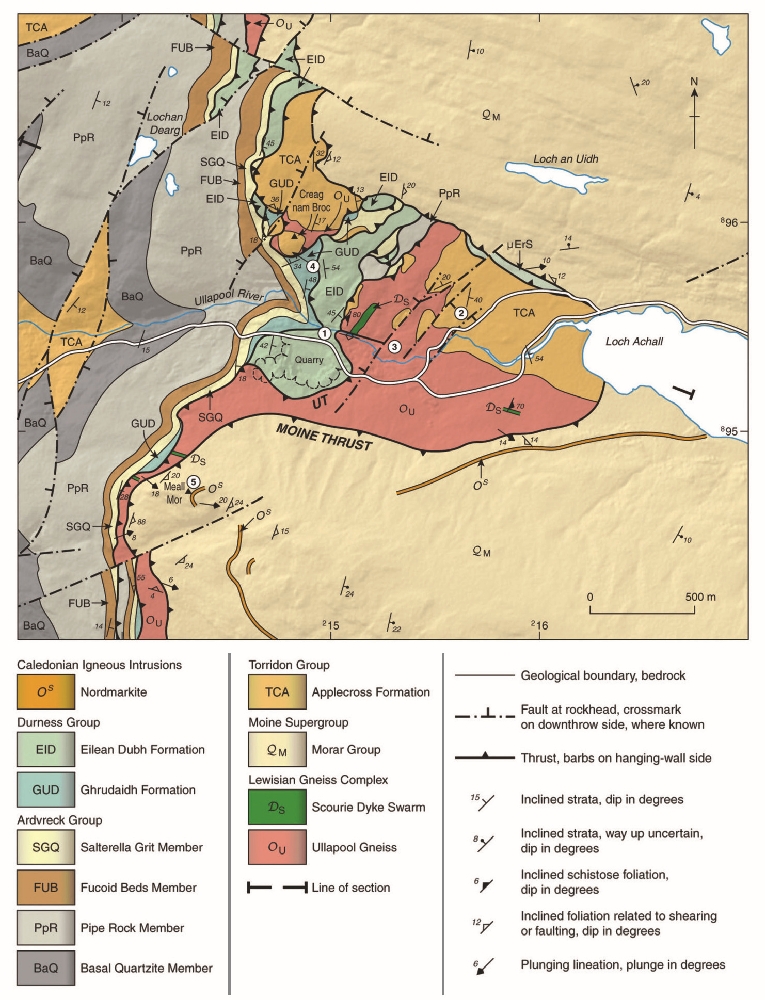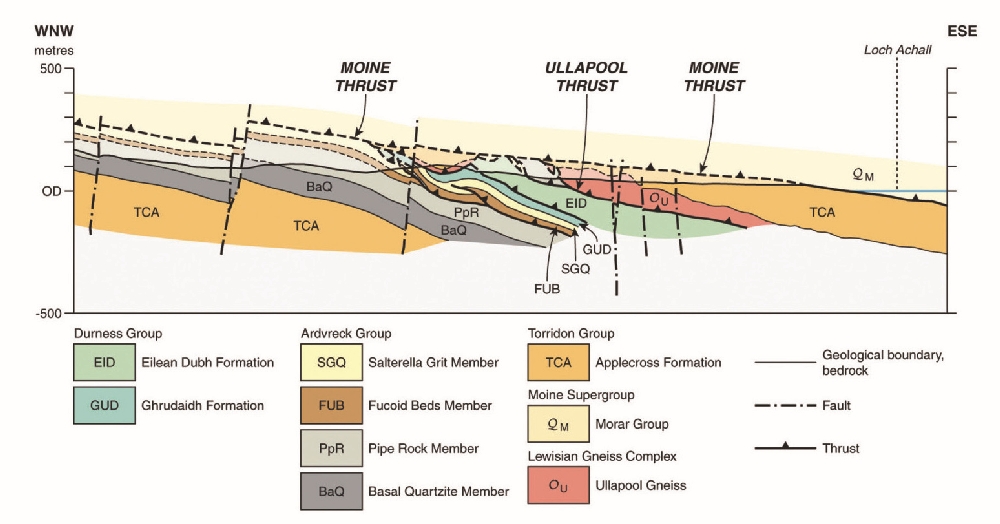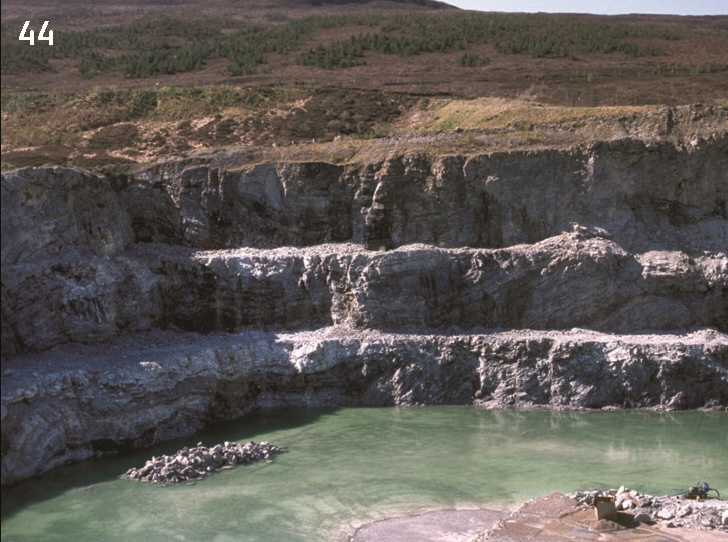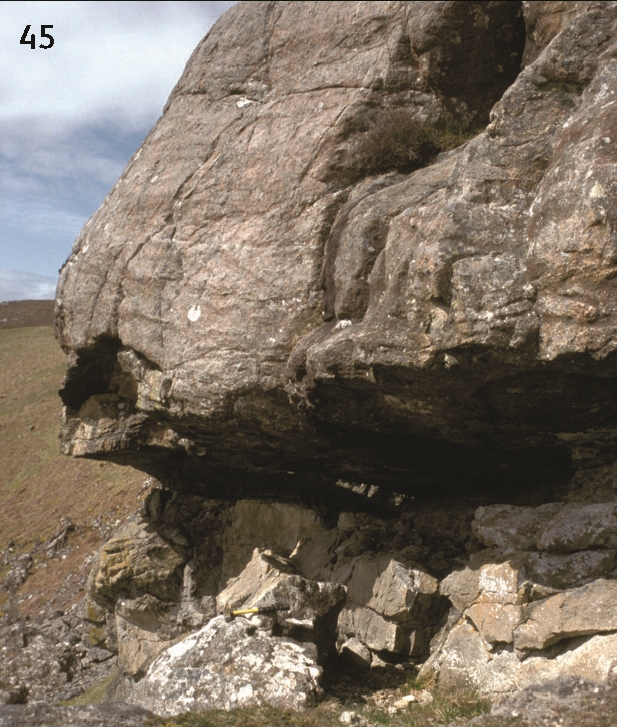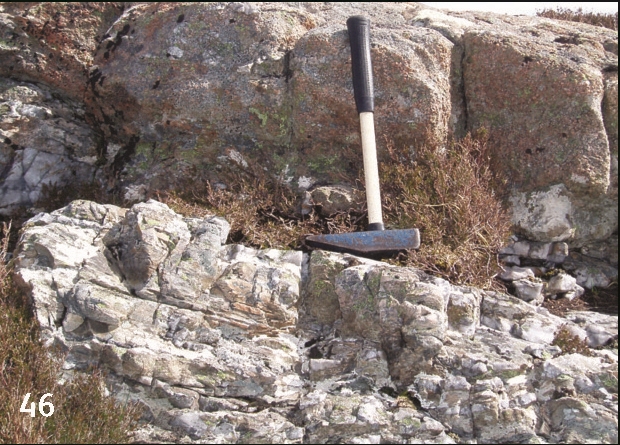Excursion 5 Ullapool River, Creag nam Broc and Glen Achall
Graham Leslie and Kathryn Goodenough
Purpose: To examine the Ullapool River section and the geology of Creag nam Broc; exposures within a structural window through the antiformally folded Moine Thrust into the underlying Ullapool Thrust Sheet (and Ullapool Thrust).
Aspects covered: Lithologies in the Ullapool Thrust Sheet; thrust geology of Creag nam Broc.
Maps: OS: 1:50,000 Landranger sheet 20 Beinn Dearg and Loch Broom; 1:25,000 Explorer sheet 439 Coigach and Summer Isles. BGS: 1:50,000 sheet 101E, Ullapool.
Terrain: The excursion comprises a number of localities close to the town of Ullapool, including some rough and pathless ground on the rocky northern slopes of the Ullapool River and around Creag nam Broc
Time: This is a full day excursion.
Access: Localities should have no problems with access at most times of the year. Good footwear is required as much of the excursion is in rough ground. Note that working quarries at Torr an Eas
The Moine Thrust is deformed across the Ullapool River by an open upright east–west trending culmination axis, such that a number of minor thrust sheets can be recognised in the footwall of the Moine Thrust, over-riding the 'normal' foreland sequence. The most significant of these thrust sheets is the Ullapool Thrust Sheet, composed mainly of metagranitoid rocks (the
The thrust sequence cannot be interpreted as a straightforward foreland propagating sequence. Folding that pre-dates the generation of the An t-Sròn, Ghrudaidh and Eilean Dubh imbricates locally allows younger strata to be thrust over older, with resultant loss of parts of the succession. The Moine Thrust clearly truncates thrusts in its footwall, as does the Ullapool Thrust in turn. As elsewhere, the Moine Thrust is a composite structure with earlier development of several tens of metres thickness of psammitic ductile mylonite, and then a later brittle to brittle/ductile movement which truncates earlier thrusting in the footwall.
Locality 5.1 Torr an Eas quarries. [NH 1490 9535]
Park in Ullapool and walk to the crossroads by the Ullapool River at
The exposures in the quarry walls demonstrate that the sequence has been folded into upright folds with amplitudes of several tens of metres. Thrusting superimposed on these fold patterns has created younger over older thrust relationships in a number of places; folding of the dolostone succession suggests movement along a concealed lower (blind?) thrust, but the fact that thrusts cut the folded succession implies that thrust deformation is out of sequence. A higher quarry to the south-west is in felsic gneisses which have been carried over the dolostones by the Ullapool Thrust.
Continue along the track, taking the left-hand fork to cross the bridge over the Ullapool River, and then walk northwards to outcrops around
Locality 5.2 Lithologies in the Ullapool Thrust Sheet. [NH 1550 9560]
The Ullapool Thrust Sheet comprises two components, which can be easily studied in these outcrops on the north side of the Ullapool River. Pale pinkish red to pale brown, rather massive immature arkosic sandstones are unconformable over metagranitoid rocks (the
Locality 5.3 Ullapool gneiss in the Eas Dubh Waterfall. [NH 1510 9550]
The Ullapool gneisses are best examined in the exposures north of the Eas Dubh waterfall, (around
The metagranitoid rocks are intruded by mafic, originally doleritic to gabbroic sheets at a variety of scales (5 cm. to 20 m thick sheets are seen) and orientations (N–S to E–W). The mafic rocks are recrystallised and granoblastic, massive and unfoliated; they now comprise plagioclase and hornblende, but in places these minerals seem to be mimetic upon an original igneous texture. The syenites are not seen to be invaded by the mafic rocks and so may also be a younger intrusive phase, but could simply be a locally developed coarser variant of the metagranitoid rock.
The
Continue downstream along the northern side of the Ullapool River. The Ullapool Thrust places the gneisses over
Locality 5.4 Creag nam Broc. [NH 1480 9580]
At Creag nam Broc the Ullapool Thrust is seen again, emplacing
North of Creag nam Broc
Along the Sole Thrust,
The relationship of the Ullapool Thrust to these underlying dislocations is not clear. Individual thrusts in the imbricate system in the footwall of the Ullapool Thrust are never clearly truncated by the higher thrust and could be interpreted as merging upwards with the Ullapool Thrust. At
The Moine Thrust runs to the north-east of Creag nam Broc and can be seen to be an abrupt brittle discontinuity with finely laminated (1–2 m ) pale to dark grey mylonitic psammite in the hangingwall. Brittle displacement on the Moine Thrust clearly truncates the underlying thrust structures; both the Ullapool Thrust and lower imbricates of the foreland succession are truncated by the Moine Thrust to the east of Creag nam Broc.
From Creag nam Broc, return to the bridge across the Ullapool River. At the track junction turn left, and then shortly afterwards take a path off to the right. This path runs above the quarries, and scattered outcrops of
Locality 5.5 The Moine Thrust at Meall Mòr. [NH 1430 9470]
Around
Take the path that turns off to the left to climb towards Meall Mòr. The Ullapool Thrust Sheet is only about 20 m thick in this area, and consists only of gneiss with no overlying sandstones. The path soon crosses the Moine Thrust, and good examples of finely-laminated Moine mylonites can be seen in numerous outcrops. Both the mylonitic foliation, and the associated lineation, dip gently south-eastwards.
At the summit of Meall Mòr is a pink-weathering, c.2 m thick intrusive igneous sheet, belonging to the 'Nordmarkite Swarm' (Goodenough et al., 2004). This intrusion is formed of abundant pink feldspar phenocrysts, up to one centimetre across, in a darker-coloured quartzofeldspathic matrix
From Meall Mòr, retrace your steps down to the main path, and then pick up the path that runs almost directly west across outcrops of the foreland succession, to bring you back to Ullapool.

